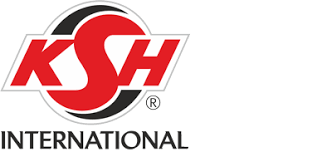About the company:
Indian Railway Finance Corp (IRFC) is coming with an IPO and is looking to raise Rs 4,633 crore with a fresh issue of 1,188,046,000 Equity Shares, forming 13.64% of equity. The price band has been set at Rs 25-26 per share for a lot size of 575 shares. The issue opens on 18th Jan, 2021 and closes on 20th Jan, 2021. As per our assessment, we believe investors seeking a high-risk, short-term bet should invest in the IPO.
COMPANY OVERVIEW
IRFC is the dedicated market borrowing arm of the Indian Railways. Their primary business is financing the acquisition of rolling stock assets, leasing of railway infrastructure assets and national projects of the GoI (Project Assets) while lending to other total entities under the Ministry of Railways (MoR). Over the last 3 decades, IRFC has played a significant role in supporting the capacity enhancement of the Indian Railways by financing a proportion of their annual plan outlay. Based on the requirements set by MoR, IRFC raises funds through various sources. Post issue, the Govt of India will continue to hold 86.36% equity stake in the company.
The Company follows a financial leasing model for financing the Rolling Stock Assets. The period of lease is typically 30 years wherein the principal amount along with other incremental borrowing costs and margins are effectively payable during the first 15 years. Moreover, its total AUM as of Sep 2020 consists of 55.34% of lease receivables, 2.25% of loans to central PSEs, and 42.41% of advances against leasing of Project Assets.
In FY20, IRFC was responsible for financing 76% of the rolling stock purchased by them and leased to the MoR compared to 84% the previous fiscal. MoR has set the target of Rs 62,567 crore to be borrowed from IRFC for Fiscal 2021. In addition, they have further indicated an intention to additionally borrow Rs 53,000 in Sep 2020.
Financially, its total revenue from operations increased by 19.33% from Rs 9,207.84 crore in 2018 to Rs 10,987.36 crore in 2019 and by 22.15% to Rs 13,421.09 crore in 2020. It was Rs 7,384.83 crore in the 6 months ended Sep, 2020. The profit for FY 2020 stood at Rs 3,192.1 crore, growing at CAGR of 26.3% over the past 3 years. The company has also delivered an average ROE of 11.1% over the same period.
Elaborating of a few POSITIVES
•It mostly has a risk-free lending profile given the fact that it lends solely to Indian Railways and associated subsidiaries. The leases and loans are backed by the Ministry of Railways which has enabled it to report NIL NPAs for the quarter ended September, 2020.
•It is a direct play on the growth of Indian Railways (IR). As IR bolsters its railway network across the country, it stands to benefit from this growth. With the rising budget allocated to strengthen rail infra, IRFC will grow.
•IRFC has diversified sources of funding, credit ratings and strategic relationship with MoR which has enabled it to keep the cost of borrowing competitive. The cost of borrowings were in the range of 6.82% to 7.27% from FY18-20.
•It’s AUM has grown on a strong note at a 20 percent CAGR from 2018 to 2020. While its CAR remained robust over ~300% against the requirement of 15% under RBI guidelines. Therefore, this indicates that the company has adequate capital to guard itself against stress on the book. Disbursements have grown at 39 percent CAGR over the past 3 years.
However, there are a number of RISKS too:
•Since its margins are highly influenced by the MoR in the lease agreements, there can be no assurance that the margin determined will be favourable for IRFC going forward. Any adverse determination of the margin will also impact its profitability. This also entails high concentration risk as it derives revenue from lending to the Indian Railways.
•It is not in strict compliance with certain provisions of the SEBI ICDR Regulations and with certain provisions of the SEBI Listing Regulations. Non-compliance may be subject to penalties which could have an adverse effect on its reputation.
•Mismatch in the tenor of leases and borrowings may lead to reinvestment and liquidity risk.
•The MoR had entered into a MoU with LIC in FY2016 for an amount of Rs 1,50,000 crore for 5 years, which has expired in FY2020. IRFC was the intermediary for the funding. However, in the future, it may not be able to avail funding from the LIC which may cause interest costs to rise in sourcing funds from other sources.
In conclusion, IRFC is a stable company which serves as the primary lender to the Indian Railways. The loans given by the company are stable and have the backing of the Ministry of Railways. Yet, the risks around the company serve as a key concern for shareholders and only investors seeking a high-risk, short-term bet should subscribe to the IPO.





